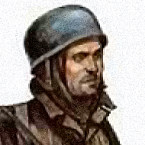1. Build your map like you would build a house-foundation first. Decide on the general "lay of the land" and build it. Lay out the hills, rivers/streams, and beaches. Then add some terrain (rough, high grass, sand dunes, snowbanks, etc.). Finally, throw the trees, roads, trails, and buildings in.
2. Remember which types of terrain are "overlays" and which are "underlays". Hills, clear, stream/gullies, and others are "underlays"---that is, they become the basis for the hex and supersede what is already there. Overlays like trees, grass, roads, and buildings go on top of the underlayment. Knowing this can keep you from accidently erasing a stream hex with a hill, or having a building sit inside a gully.
3. Always check the terrain box after you place things....it will indicate if the height is wrong, or the combination doesn't make sense. For example, seeing the following "Hex 0,0, Primary road, Secondary road, Gully, Level 15, Slope, Wooden Building" may be OK as far as the mapmaker program is concerned, but is it really what you wanted for that hex?
4. Too many terrain features in a hex can confuse the AI, not to mention the player. Also, a conservative hand with the "paintbrush" is better than a liberal one. What you strive for is a realistic impression of the land, not an actual "every bush and stone" representation.
Well, back to my mapmaking......Attu Island is slowly taking shape.





